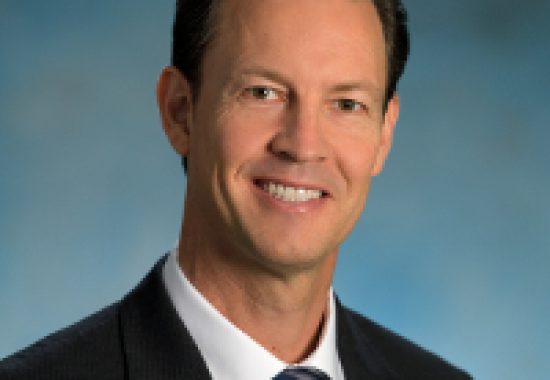 Dylan Edwards, PhD, MRRI’s new director, has big visions for the institute’s future—which he sees as being just as bright as its prestigious past. Taking over for retiring director and co-founder John Whyte, MD, PhD, Edwards comes to MRRI from the Weill Cornell Medicine-affiliated Burke Neurological Institute in White Plains, NY. Dr. Edwards’ research has primarily focused on non-invasive brain stimulation and the use of robotics in recovery from stroke and spinal cord injury. At MRRI, he’ll find ways to continue his research while helping steer MRRI to new heights in the coming years.
Dylan Edwards, PhD, MRRI’s new director, has big visions for the institute’s future—which he sees as being just as bright as its prestigious past. Taking over for retiring director and co-founder John Whyte, MD, PhD, Edwards comes to MRRI from the Weill Cornell Medicine-affiliated Burke Neurological Institute in White Plains, NY. Dr. Edwards’ research has primarily focused on non-invasive brain stimulation and the use of robotics in recovery from stroke and spinal cord injury. At MRRI, he’ll find ways to continue his research while helping steer MRRI to new heights in the coming years.
A track record of innovation
Originally from Perth, in Western Australia, Edwards received his PhD in clinical neurophysiology at the Centre for Neuromuscular and Neurological Disorders at the University of Western Australia (now the Perron Institute for Neurological and Translational Sciences). In 2007, Edwards used a sabbatical from Edith Cowan University to work at Harvard University and MIT, where he started his research in non-invasive brain stimulation in combination with robotic movement therapy. He established a successful collaboration between the two schools along with Burke Neurological Institute, which ultimately compelled Edwards to set up shop there in 2008. At Burke, his focus expanded from stroke to spinal cord injury and adult cerebral palsy, using existing and emerging robotic technologies to help in motor recovery—but his lab continued to maintain the dual themes of non-invasive brain stimulation and robotics-based therapies.
Edwards also helped found a restorative neurology clinic at Burke for patients who would benefit from rehabilitation therapies but who didn’t quite fit into the existing research trials. His lab has been continuously funded by large grants from the NIH.
“These areas of investigation are fundable, because they apply to problems of high prevalence—community disability after stroke,” says Edwards. “And in this kind of research, you can’t rehash old ideas people have studied for a long time—you have to be really innovative. Traditional hypothesis-driven research, together with data-driven analyses, where contemporary machine learning approaches are applied to large data-sets, can establish the features of rehabilitation that lead to most robust gains”.
Making the transition to MRRI
Part of what attracted Edwards to MRRI was its reputation for innovation, and its history of combining research and rehabilitation practice to advance the field.
“Here you have a world class institute in theoretical and clinical research by many metrics, physically adjacent to a stellar rehabilitation hospital. It’s really beautifully integrated,” says Edwards. “That’s not so common in the world.”
Edwards says that he’s also been impressed with MRRI’s robust patient registry, and aims to expand this in the future. “MRRI has systems in place that have been built over years,” he says. “Volunteering patients are carefully profiled, opening up the possibility to participate in cutting-edge research, and allowing scientists to advance our understanding of the clinical condition and interventions. This isn’t always the case at other respected institutions.”
Moving into the Future
As to where he hopes to help guide MRRI in the coming years, Edwards has some interesting ideas. Although his own lab-based research will continue, he’ll drive multisite collaborative projects more than he has in the past, to allow time for executive tasks.
“I’ll engage clinicians here at Mossrehab and elsewhere in the Einstein Healthcare Network, and continue my work using non-invasive stimulation, brain imaging and mathematical models for outcome prediction in post-stroke movement recovery,” says Edwards. “Recent efforts have been directed to build up the mobility side of MRRI, and this is part of what I’ll help to do.”
Edwards plans to bring key insights from other institutes to MRRI to capitalize on its existing strengths and to introduce new ones. “One thing I’ve been thinking a lot about as I step into this new role,” says Edwards, “is the underlying attributes and qualities of world leading medical research organizations. For instance, Rockefeller University, having a series of Nobel Laureates and other markers of exceptional scientific accomplishment, started as a small research institute. Part of its success was to attract and keep good people, and it avoided pressures of sacrificing depth for breadth of its research.”
Keeping patients’ rehabilitation at heart
One of Edwards’ overarching goals is to keep patients’ well-being and recovery a common driver across his research initiatives. Predicting accurately how patients will respond to treatments and how well they’ll recover is a particular interest.
“For stroke patients, this means having better markers for spontaneous recovery and for intervention-related recovery,” says Edwards. “It’s very hard to predict how patients will do. We want to be able to answer with confidence the question, ‘How’s my grandpa going to be?’”
And as always, innovation will be at the heart of MRRI’s future, as it has been in the past.
“Part of innovation is not based on new technologies, but rather the ability to think of old problems in new ways, or in light of emerging insight and understanding. I feel privileged to be surrounded by some of the most talented and creative scientists I have come across. This includes current and Emeritus staff, MossRehab clinician-scientists, as well as active collaborators. As we look toward the horizon, we see the Moss Rehabilitation Research Institute as the epicenter of neuroscience in rehabilitation medicine, a think-tank and reference site for scholars; and an exemplar site for theory and research driven clinical practice.”


5 comment on “Dylan Edwards Steps into Role as MRRI Director”